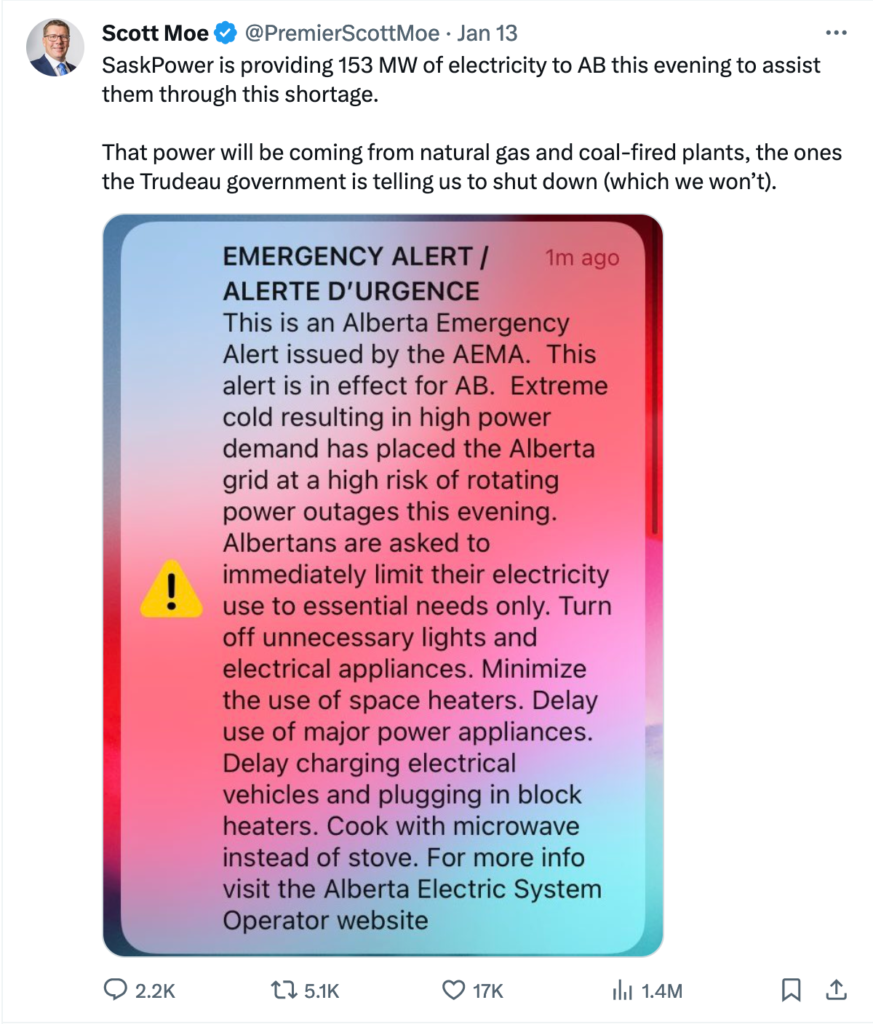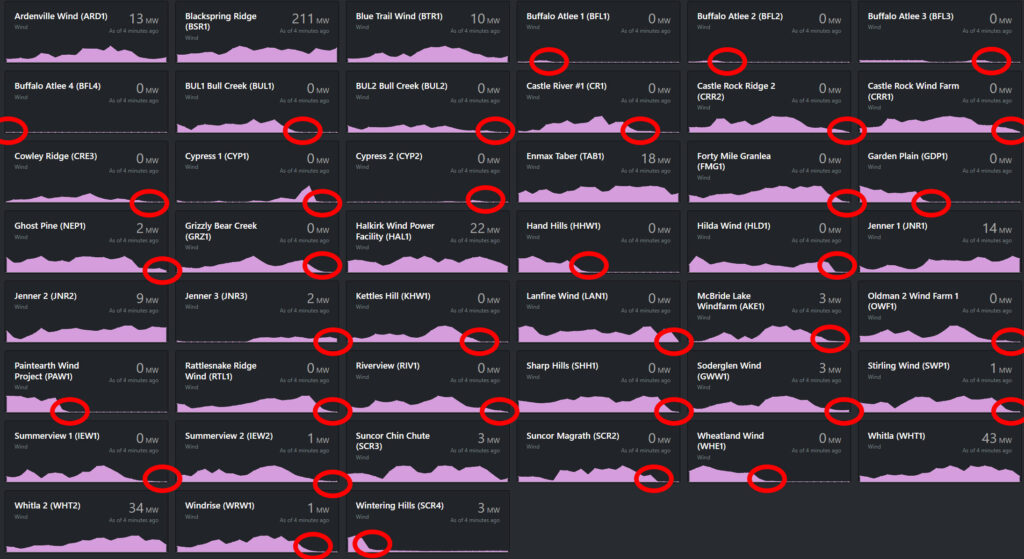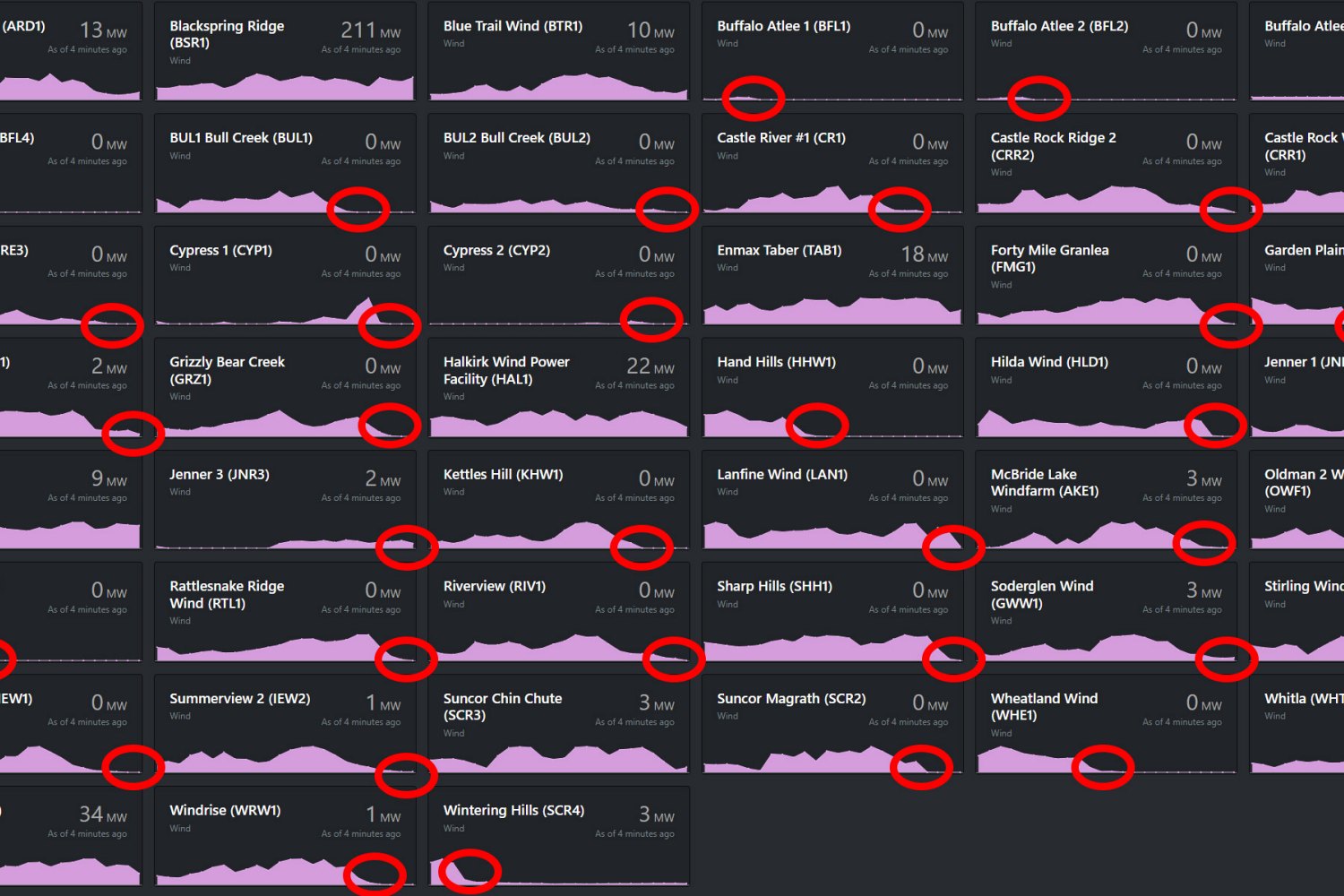Albertans were given a stark warning of the inherent problems with the so-called “green transition” to “renewable” energy sources. An alert went out January 12, 2024 across cellphones warning — at a point when record temperatures were plummeting in some regions to temperatures below -40C — that the power grid was dangerously close to rolling blackouts. Everyone was asked to turn off anything that was not deemed “essential.”

Let’s be clear: this wasn’t just a situation of inconvenience but potential catastrophic consequences, particularly for vulnerable people. From possible pipes freezing in poorly insulated homes, to malfunctioning of furnaces that require manual restarting, etc. time with temperatures this low becomes a life-threatening factor if heat is not quickly restored.
Shortly after the alert was issued, Saskatchewan Premier Scott Moe said his province would provide 153 megawatts of power to Alberta to help them during the shortage. He then tweeted in a pointed criticism of the Feds: “That power will be coming from natural gas and coal-fired plants, the ones the Trudeau government is telling us to shut down (which we won’t).”
When asked about soaring power rates in the province last summer, Alberta Premier Danielle Smith quipped: “This is what happens when ideology runs the power grid.”1 She was referring to the hasty and reckless closure of coal plants in the province begun by the former NDP government. That is the same reason why Alberta now has an unstable power grid: there is no longer a reliable base energy source when coal or natural gas is being replaced by wind and solar.

Wind: Dangerous In This Climate
But it’s not only when the sun isn’t shining or when the wind isn’t blowing that those energy sources fail to deliver. It’s the cold temperatures in this climate that force industrial wind factories to shut down once temperatures reach -30C. Brian Zinchuk of Pipeline Online has been tracking the unreliability of Alberta’s grid:
When it gets really cold, like -30 C or colder, many materials lose much of their strength and are prone to shattering. This applies to wind turbines as much as it applies to car bumpers. And as a result, most wind turbines are shut down when the ambient temperatures reaches around -30 C, lest their continued operation cause them to shatter.
January 12, 2024, “Most of Alberta’s wind fleet slowly shut down Thursday night, but not for lack of wind”, Pipeline Online
Indeed, when temperatures reached between -28C to – 30C, Zinchuk monitored wind turbines across the province coming to a grinding halt – as did any power they may have been delivering. The same thing happened in Montana just south of Alberta’s border. Watch:
Another Reason to Reject Big Wind
Last Fall, Premier Smith and Minister of Environment Rebecca Schulz labeled the federal Liberal’s 1.7 trillion dollar plan a threat to the provinces:
This is expensive, unreasonable, ideological, and quite frankly, it is dangerous.
Hon. Rebecca Schulz, launch of national ad campaign, September 28, 2023; CPAC
Evidently, this was not hyperbole. And it provides yet another reason — as if there weren’t enough already — to reject industrial wind factories. As we have documented here, they seriously harm people, animals, birds, and bats. Hundreds of studies and now court decisions clearly show the harm of industrial turbines to both the environment, soil, and economies. And now one can add the threat they are to grids due to their inherent unreliability on freezing and windless days. In the words of Oxford’s Emeritus Professor Wade Allison:
Wind power fails on every count.
“Oxford Scientist: Wind Power Not Reliable”, March 28, 2023, windconcerns.com
Wind Concerns continues to call upon the Alberta government to, once and for all, follow Ontario’s example2 and place a moratorium on further expansion of industrial wind.
Mark Mallett is a former award-winning reporter with CTV Edmonton and an independent researcher and author. His family homesteaded between Vermilion and Cold Lake, Alberta, and now resides in the Lakeland region. Mark is Editor in Chief of Wind Concerns.



It is time to fire up the coal plants and tell Trudeau to go pound sand